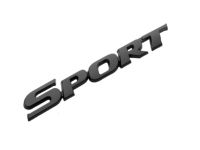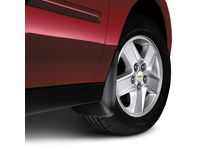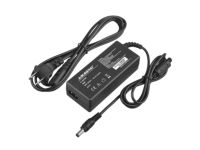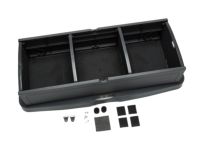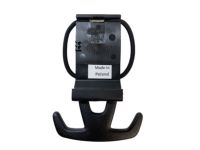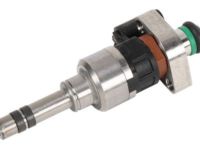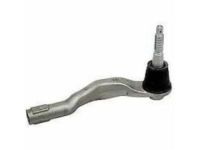Why choose GMPartsGiant
- Large Inventory
The best site to buy Chevrolet Malibu genuine parts for years has been GMPartsGiant.com. We're the best online parts and accessory store for your Chevrolet Malibu. GMPartsGiant.com offers a large parts and accessory inventory to cover all your vehicle's repairs. Feel free to browse through our genuine Chevrolet Malibu parts and accessory catalog to find all your vehicle's needs.
- Fast Shipping Times
All of our Chevrolet Malibu auto parts and accessories are expedited directly from verified dealers and backed by the manufacturer's warranty. Our experienced team ensures the orders are packed to provide quick transit times. The majority of the orders are shipped out within a couple of business days to get the parts out to you as fast as possible.
- Low Prices
Our low prices say it all. You can rest assured that you will always receive unbeatable prices on OEM Chevrolet Malibu parts. Our giant inventory is beyond compare and has everything you need at an extraordinary value not found anywhere else. Whether you're restoring an old vehicle or upgrading the performance of your vehicle you can count on the quality of our products without hurting your bank account.
Popular Genuine Chevrolet Malibu Parts
- Engine Parts View More >
- Front Suspension, Steering Parts View More >
- Fuel System, Exhaust, Emission System Parts View More >
- Brakes Parts View More >
- Transmission - Automatic Parts View More >
- Frames, Springs, Shocks, Bumpers Parts View More >
- Cooling System, Grille, Oil System Parts View More >
- Interior Trim, Front Seat Trim, Seat Belts Parts View More >
- Front End Sheet Metal, Heater Parts View More >
Shop Genuine Chevrolet Malibu Parts with GMPartsGiant.com
The Chevrolet Malibu is a mid-size car that was produced from 1964 to 1983. The sedan was rear-wheel-drive from 1964 to 1983 that was changed to a front-wheel-drive car in 1997. The Malibu is powered by a variety of engines; 2.0 L LTG I4 turbo (gasoline), 2.0 L VCDi I4 turbo (diesel), 2.4 L LUK I4 hybrid (gasoline), 2.4 L Ecotec I4 (gasoline), 2.5 L LCV I4 (gasoline), 2.5 L LKW I4 (gasoline), and 3.0 L LFW V6 (gasoline) versions. The latest models are powered by a 1,341 cc (81.8 cu in) 1.35-liter E-Turbo Inline-3 version that produced 154 bhp (115 kW) at 5600 rpm and 174 lb. ft. (236 Nm) of torque at 1500-4000 rpm. Some are equipped with a 1,598 cc (97.5 cu in) 1.6-liter LH7 turbo diesel Inline-4 version that produced 134 bhp (100 kW) at 3500-4000 rpm and 236 lb. ft. (320 Nm) of torque at 2000-2250 rpm. The Malibu is equipped with the 4-speed 4T45 automatic, 6-speed 6T40 automatic, and 6-speed 6T70 automatic transmissions. The eighth generation included the 6-speed 6T40 automatic, 6-speed 6T70 automatic, 6-speed Aisin AWTF-80 automatic (South Korea), and 6-speed manual (Europe and Uzbekistan) transmissions were available. The ninth generation equipped the 6-speed GM 6T45 automatic, 8-speed Aisin AWF8F45 automatic, and 9-speed GM 9T50 (M3E) transmissions. The Malibu has been transformed from front-wheel-drive to rear-wheel-drive. The latest models, all of them use a nine-speed automatic transmission. The Malibu comes with 17-inch wheels, LED taillights, an acoustically laminated windshield, a remote engine start, heated front seats, and a power-adjustable driver's seat.
Chevrolet Malibu owners have raised several concerns, with the most common ones being power steering issues and fuel pump problems. Power steering issues manifest as intermittent outages, characterized by clunking noises, excessive front-end vibration, grinding sounds while turning, steering tilt failing to lock, and difficulty in steering control. These signs might indicate a malfunctioning steering knuckle or inadequate protection from the steering column cover. On the other hand, fuel pump problems are typically identified by a whining noise, difficulty starting the car, and a decline in engine performance, suggesting the need for fuel pump replacement. Apart from these key issues, regular maintenance is crucial for prolonging the lifespan of the Chevrolet Malibu. Periodic checks on components such as seat belts, which secure against harmful movement, and windshield wipers or wiper blades, responsible for maintaining clear vision while driving, are essential for ensuring safety and optimal vehicle performance.
When it comes to quality, there's no better choice than OEM parts. Manufactured by Chevrolet, they undergo the strict testing procedures and are made from top-quality materials to guarantee excellent dependability and long-lasting durability. Visit GMPartsGiant.com for the most budget-friendly OEM Chevrolet Malibu parts, including Body Moldings, Sheet Metal, Rear Compartment Hardware, Roof Hardware, Windshield, Wiper, Mirrors, Instrument Panel, Console, Doors online. Every genuine Chevrolet Malibu part is supported by a manufacturer's warranty, which guarantees superior quality, reliability, and durability. Furthermore, all our parts are delivered quickly and come with an easy return policy.
Chevrolet Malibu Parts Questions & Answers
- Q: How do you remove the throttle body on Chevrolet Malibu?A: To remove the throttle body, begin by disconnecting the cable from the negative battery terminal and removing the air intake resonator. Disconnect the throttle body electrical connector and remove the mounting bolts. Check the O-ring type throttle body gasket and replace it if needed. To install, begin by installing the gasket and tightening the mounting bolts to the specified torque. Start the engine and check the operation and that there are no air leaks.
- Q: How do you remove the Steering Wheel on Chevrolet Malibu?A: To remove the clockspring and steering wheel, begin by parking with the wheels pointing straight and disconnecting the cable from the battery's negative terminal. Disable the airbag system and remove the steering column covers. Remove the airbag module by inserting a round tool into the holes on the back of the steering wheel, then unplug the connectors and remove it. Detach the clockspring wire harness and disconnect the connector for the steering wheel switches. Remove the bolt and lift the steering wheel off.
- Q: How do you remove the Fuel Injector and Fuel Rail on Chevrolet Malibu?A: To remove the SL engine, first decrease the fuel system's pressure and disconnect the battery. Then, take off the engine cover, insulation and ignition coils. Detach fuel rail pressure sensor and individual injector connectors and move harness aside. Disconnect fuel rail harness connector and high-pressure fuel pipe. Take out screws for fuel injector assembly by either Method 1 or Method 2. Finally, remove injectors from the fuel rail by carefully prying apart assembly and pulling injectors away. For two-liter engines, disconnect high-pressure fuel pipe, remove intake manifold; disconnect Fuel Rail Harness & Pressure Sensor Connectors on 2B-1 page (if applicable). Remove mounting bolts of Fuel Rail and Upper Grommets; also separate Electrical Connector from Fuel Rail Harness .Undo bolts then work Fuel Rail & Injectors out of Cylinder Head. Detach electrical connectors for the fuel injectors and remove injector wire harness. When repairing injectors cut off Teflon seal from them. For installing Teflon seals use a kit to service fuel injectors then wrap lower injector seal groove in AC tape made of aluminum ducting material. Put a seal into place on Injector Body using Injector Service Tool; remove tape repeat steps for Lower Groove over again like setting it on fire! Compress seals by correct diameter compression ring! At last, tighten bolts ; check for leaks before starting engine after installing injectors plus put back them along with rails in cylinder head.
- Q: How do you remove the tie-rod end on Chevrolet Malibu?A: To remove the tie-rod end, begin by applying the parking brake and loosening the front wheel lug nuts. Then, raise the front of the vehicle and support it securely on jackstands before removing the wheel. Loosen the tie-rod end jam nut and mark the relationship of the tie-rod end to the threaded portion of the tie-rod.





















































